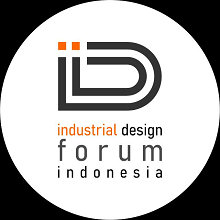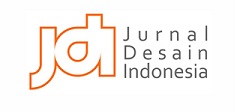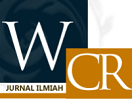UPCYCLING LIMBAH PLASTIK DENGAN TEKNIK MERENDA (CROCHET) UNTUK PEMBUATAN UPHOLSTERY PADA PRODUK POUF
Abstract
The daily use of plastic bags on a large scale has an impact on the increasing amount of plastic bag waste generated. Responding to these problems, the author initiated the utilization of plastic bag waste in the interior field, namely by upcycling plastic bag waste using crochet techniques for making upholstery on pouf products. That way in this design can be formulated a problem of how to process plastic bag waste with crochet techniques into upholstery on pouf products. The purpose of designing this work is to provide alternatives and variations in the processing of plastic bag waste using crochet techniques. This design uses the method of creation proposed by Palgunadi (2007), which includes three processes of planning and making products, namely the exploration process, extraction process, and termination point. The results obtained from this design are that plastic bag waste, especially HDPE types, can be made into plastic fibers because this plastic waste has a medium thickness, but is still strong and very much available. Furthermore, to process plastic waste into plastic fibers, steps are needed such as sorting, cleaning and then cutting plastic bag waste to produce plastic fibers that are ready to be crocheted to produce upholstery poufs that are in accordance with taste.
Keywords
Full Text:
PDF (Bahasa Indonesia)References
Anita, R. R., & Puspitasari, C. (2019). Penerapan Olahan Limbah Kantong Plastik dengan Teknik Crochet sebagai Unsur Dekoratif pada Produk Fesyen. Atrat Jurnal Seni Rupa, 7(1), 81–91.
DOI:https://doi.org/10.26742/atrat.v7i1.646
Aryanto, Y. (2012). 173 meja & kursi. Bogor: Griya Kreasi.
Djamil, S. (2008). Kamus Besar Bahasa Indonesia. (T. R. Publisher (ed.)). Surabaya: Reality Publisher.
Kay, S. (2017). "Reclaim Upcycled at Salvo Fair 2017". SalvoNEWS, 2017, Juni 5. Wales, UK. Diambil dari: https://www.salvoweb.com/salvonews/18484-reclaim-upcycled-at-salvo-fair-2017
Keim, C., & Werker, K. P. (2011). Teach Yourself Visually Crochet (2nd ed.). New Jersey: Wiley Publishing Inc.
Maulana, A. H., & Diah, S. R. S. (2021). “Perhatikan, Ini Dampak Buruk Membakar Sampah Rumah Tangga”. KOMPAS.COM, 2021, Juli 6. Jakarta. Diambil dari: https://www.kompas.com/homey/read/2021/07/06/200500976/perhatikan-ini-dampak-buruk-membakar-sampah-rumah-tangga?page=all
Muthu, S. S. (2017). Textiles and Clothing Sustainability: Recycled and Upcycled Textiles and Fashion. Hong Kong: Springer.
Palgunadi, B. (2007). Disain Produk 1: Disain, Disainer, Dan Proyek Disain. Bandung: Institut Teknologi Bandung.
Rahmaningtyas, W., Suryani, N., & Harnanik, H. (2019). Peningkatan Mutu Produk Barang Fungsional Di Desa Candirejo Melalui Pelatihan Pemanfaatan Limbah Plastik Untuk Mengurangi Pencemaran Lingkungan. Jurnal Puruhita, 1(1), 34–37.
Richardson, M. (2014). “Design for Reuse: Integrating Upcycling Into Industrial Design Practice.” Academia, 2014, Agustus 6. Caulfield East, Australia. Diambil dari: https://www.academia.edu/1052431/Design_for_Reuse_Integrating_Upcycling_Into_Industrial_Design_Practice
Sandjaya, I. (2003). Ruang Duduk: Seri Menata Rumah. Granmedia Pustaka Utama.
Wicaksono, A. A., Trisnawati, E., Kharisma, D., & Setyawan, A. (2014). Teori Interior. (H. Aditama (ed.)). Griya Kreasi.
DOI: http://dx.doi.org/10.22441/narada.2023.v10.i2.005
Refbacks
- There are currently no refbacks.
Fakultas Desain dan Seni Kreatif
Universitas Mercu Buana
Gedung E Lantai 4
Jl. Raya Meruya Selatan no.1, Kembangan, Jakarta 11650
Tlp./Fax: +62215871335
Journal International Standard Serial Number (ISSN) Registration:
The Journal is indexed by:
Tools for Citations & Plagiarism Detection:

Ciptaan disebarluaskan di bawah Lisensi Creative Commons Atribusi-NonKomersial 4.0 Internasional
 NARADA: Jurnal Desain dan Seni
NARADA: Jurnal Desain dan Seni

























